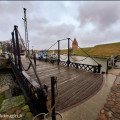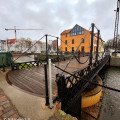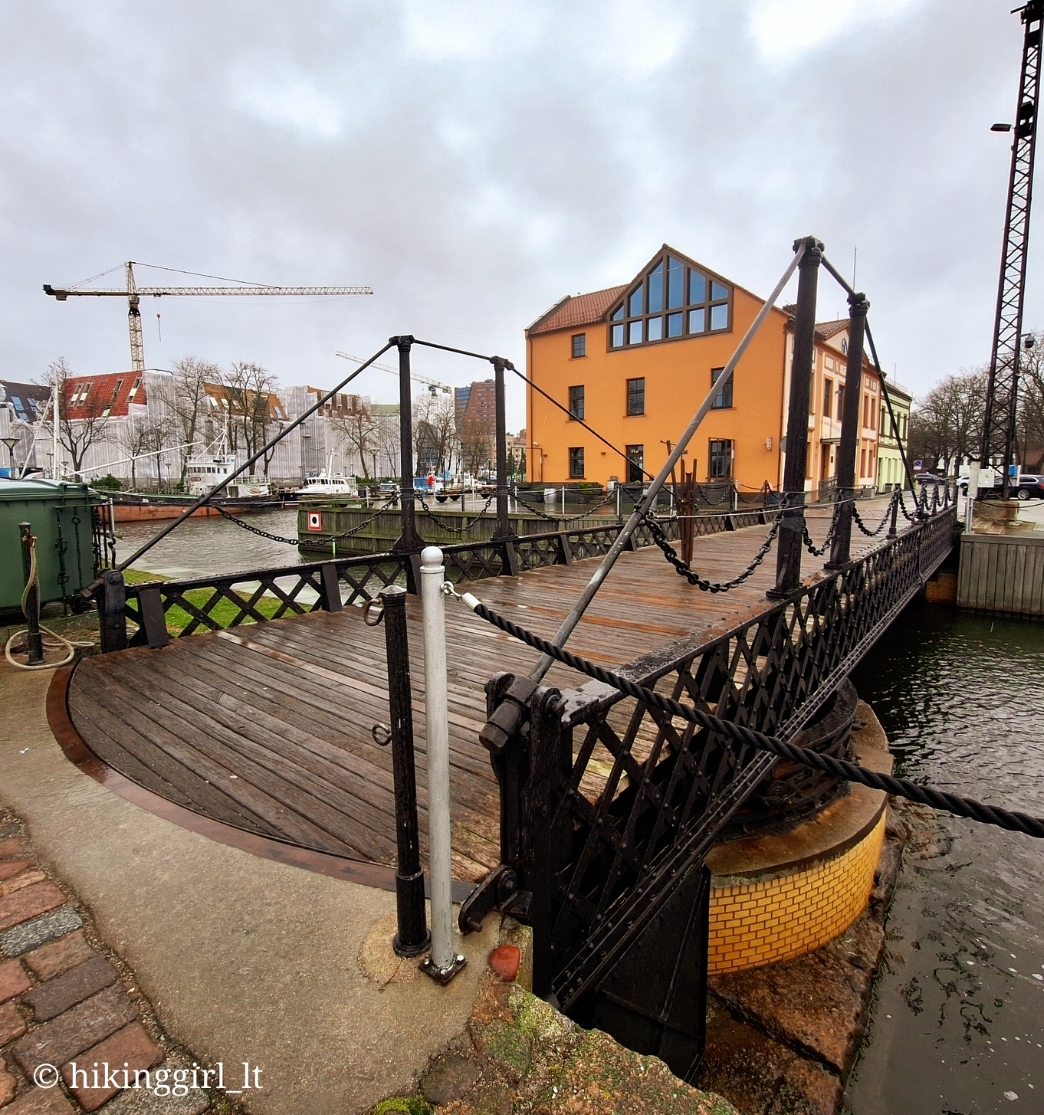Rotating Bridge

459

1

0
The Klaipėda rotating bridge, formerly known as the Chain Bridge, is a unique historical bridge located in the old town of Klaipėda. Built over the castle moat, it allows recreational boats to pass through and provides pedestrian access to the Cruise Ship Terminal. The bridge was originally constructed as a wooden structure in 1809, later transformed into a lifting bridge, and in 1855, it was converted into a rotating bridge. It is the only bridge with such a mechanism in Lithuania and the Baltic States. The bridge was restored between 2008 and 2010, and in 2010, a sculpture titled "Black Ghost" was placed next to it. The bridge is notable for its unique rotation mechanism, which is operated manually. This bridge is listed in the Cultural Heritage Register and has become an important part of Klaipėda's cultural heritage.
Info
-

Architecture
-
Klaipėda



 Entertainment
Entertainment
 Food establishments
Food establishments





























 55.706653, 21.126784
55.706653, 21.126784
 Get directions
Get directions










